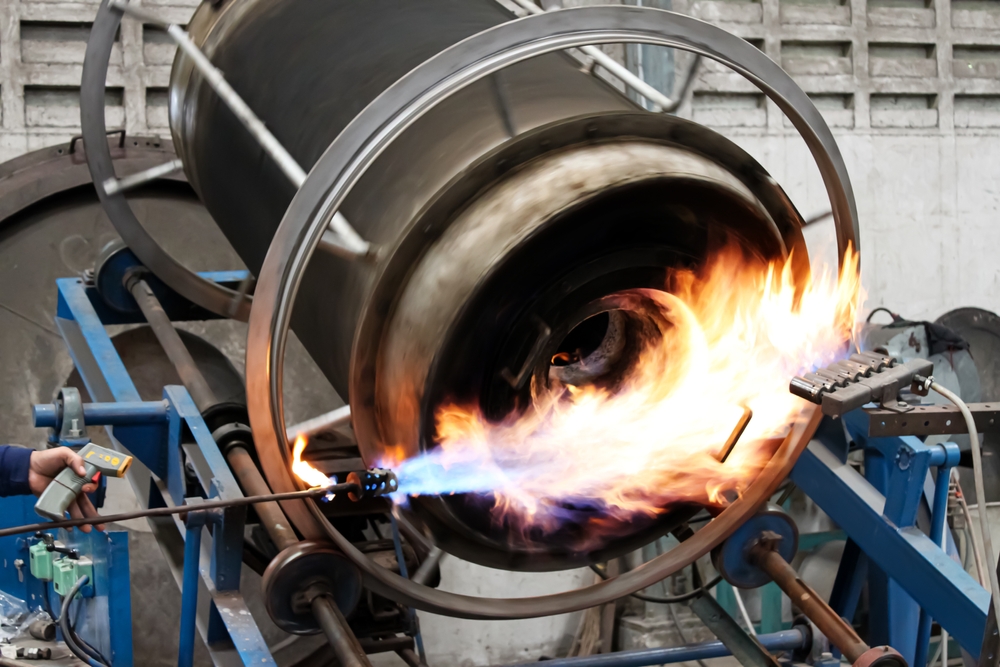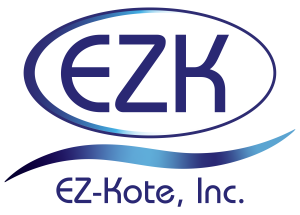
Rotational molding has shaped the way we manufacture plastics. This process, also known as roto molding, offers unique advantages over other plastic molding methods.
In this blog, EZ-Kote explains rotational molding and its applications across industries and how water-based mold releases can help.
What Is Rotational Molding?
Rotational molding is a specialized plastic manufacturing process. It stands out for its ability to create hollow, three-dimensional objects with intricate shapes and a consistent wall thickness.
Related Post: Pros & Cons Of Rotational Molding Vs. Blow Molding
Unlike injection molding or blow molding, which relies on high-pressure plastic injection into molds, rotational molding utilizes heat, gravity, and controlled rotation to produce products.
How Rotational Molding Works
- Mold preparation: The process begins with creating a mold, usually made of metal, aluminum, or a combination of both, designed to match the final product’s desired shape.
- Plastic resin: A powdered plastic resin is poured into the mold. The choice of resin depends on the characteristics of the final product, including strength, durability, and resistance to environmental factors.
- Sealing the mold: Once the mold is filled with the plastic resin, it’s securely sealed to ensure no leakage during manufacturing.
- Heating: The sealed mold is then placed inside an oven. The oven can heat the mold evenly as it rotates. As the temperature inside the oven rises, the plastic particles inside the mold begin to melt.
- Coating and fusion: As the mold rotates, the melted plastic coats the mold’s inner surface, adhering uniformly. This process creates a seamless and consistent thickness throughout the product.
- Cooling and solidification: Controlled cooling follows the melting phase. The mold cools down slowly, which allows the plastic to solidify, taking on the desired shape and properties.
After the cooling phase is complete, the finished product is removed. The rotational molding process can be repeated multiple times to create identical products.
Applications of Rotational Molding
Rotational molding has a broad range of applications spanning different industries.
Everyday Products Made Using Rotational Molding
Tanks and containers: Rotational molding is frequently used to create water, chemicals, and fuel storage tanks. Its ability to produce large, seamless containers is a significant advantage in this industry.
Playground equipment: Rotational molding is the preferred choice for manufacturing durable, safe, and fun playground equipment such as slides, swings, and climbing structures. The process can produce vibrant and child-friendly equipment in parks and schools.
Automotive components: Many automotive components, including air ducts, air cleaners, and fuel tanks, are produced using rotational molding. The technique can create parts with complex geometries and excellent chemical resistance.
Toys and novelties: Vibrant and sturdy toys like action figures, balls, and large-scale figurines are often created through rotational molding, thanks to its ability to form smooth and intricate designs.
Custom industrial parts: Several industrial sectors rely on rotational molding to produce custom components, such as protective cases, pipe fittings, and specialized enclosures.
Recreational equipment: Rotational molding is preferred for manufacturing products like kayaks, canoes, and buoyancy aids.
Advantages of Rotational Molding
Rotational molding offers several key advantages that have contributed to its widespread use across various industries.
Design flexibility: Rotomolding can produce complex, hollow shapes that are challenging to achieve with other molding methods. This design flexibility is highly advantageous to product designers.
Durability: Products manufactured using rotational molding are known for their durability and resistance to impacts, making them ideal for applications that require robust and long-lasting parts.
Uniform wall thickness: Unlike other molding processes, rotational molding creates products with consistent thickness, ensuring even strength throughout the part.
Cost-efficiency: Tooling costs for rotational molding are often lower than other methods, especially for smaller production runs. This makes it a cost-effective choice for prototyping and small-scale manufacturing.
Reduced material waste: The ability to reuse excess material and recycle powdered resin reduces material waste, making rotomolding an eco-friendly option.
Low maintenance: Rotational molding machines and molds require relatively low maintenance, reducing downtime and operational costs.
UV and chemical resistance: The final products exhibit excellent resistance to UV radiation and various chemicals, making them suitable for outdoor and industrial applications.
The Future of Rotational Molding
As manufacturing technologies continue to evolve, so does the future of rotational molding.
Several trends and innovations are shaping the way this method is utilized.
Material advancements: New materials, including biodegradable resins and composites, are being developed for roto molding. These materials expand the range of applications for this process and align it with sustainability goals.
Automation: Automation and robotics are increasingly being integrated into roto molding processes. This leads to higher efficiency, reduced labor costs, and improved consistency in production.
Sustainability: The push for more sustainable manufacturing practices drives the adoption of rotational molding due to its reduced material waste and recycling potential. Eco-friendly materials and processes are becoming increasingly important.
Customization: With the demand for personalized products rising, roto molding is well-suited for creating unique, one-of-a-kind items. This trend may lead to the growth of small-scale, niche rotomolding businesses.
3D printing integration: The combination of rotational molding and 3D printing is emerging as a powerful approach. 3D printing can create custom mold inserts, allowing rapid prototyping and design iteration.
Water-Based Mold Releases for Rotational Molding
Rotational molding is a versatile and cost-effective plastic manufacturing process that has effectively shaped the manufacturing landscape. Help your rotational molding processes along with a semi-permanent, water-based mold release.
EZ-Kote has over 30 years of experience with water-based mold releases for rotational molding. Our engineers help you select and test the suitable mold release for your industrial processes, even if you need a custom formulation.
Contact EZ-Kote or call (770) 720-1811 for more details. We’ll respond within 24 hours.
